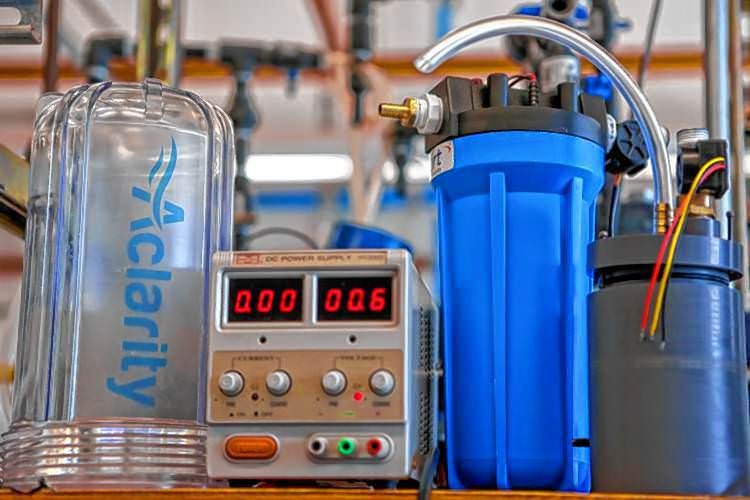New Technology Uses Electricity to Create a Reaction to Purify the Water
Published on by Water Network Research, Official research team of The Water Network in Technology
In a water testing laboratory at the University of Massachusetts, a researcher has identified the technology that can remove contaminants from water more thoroughly, and less expensively, than similar products already on the market.
By SCOTT MERZBACH

Aclarity under the sink prototypes, at right, are shown alongside a power supply center June 6 in UMass Amherst’s ELab II, where the technology was developed by co-founder Julie Bliss Mullen to provide clean, safe and reliable drinking water. For The Recorder PHOTOS/Sarah CROSBY
Following her discovery of a method that uses electricity to create a reaction to purify the water, Julie Bliss Mullen, a doctoral student in civil and environmental engineering, teamed with Leverett native Barrett Mully to found Aclarity, LLC, a company they believe will be offering a scalable technology that allows water in a small bottle to be cleaned as easily as the water in a specific household sink, at an entire home and, eventually, for a whole city or town.
“This can be a transformational technology to clean water better than anything out there,” Mully said.
Aclarity, founded in 2017 and already developing under-the-sink prototypes to clean water from a faucet, won the $26,000 grand prize last year at the Innovation Challenge at UMass, a program of Isenberg School of Management’s Berthiaume Center for Entrepreneurship, and recently took second place at Valley Venture Mentors Accelerator program, and with it a $27,500 award.
Mullen’s technology kills pathogens, treats toxic organics and removes metals through electricity, and, if available, could solve the Flint, Mich., water crisis by providing a treatment option that conserves resources and energy, as well as not requiring all treatment to be done at a centralized location.
A portable prototype even went to India with Chancellor Kumble Subbaswamy, where he demonstrated it in a rural part of the country using solar power.
Mullen, who is still pursuing her doctorate, continues to do validation and testing, and gathering hard data.
Read full article: The Recorder
Media
Taxonomy
- Treatment
- Treatment Methods
- Chemical Treatment
- Technology
- Wastewater Treatment
- Energy
- Energy Efficiency
- water treatment